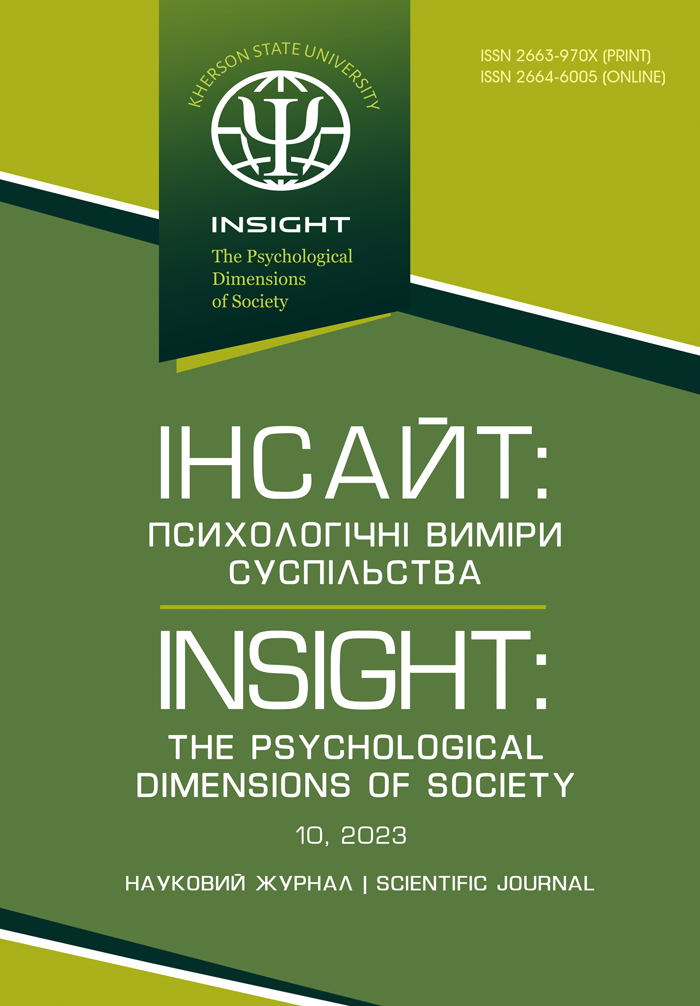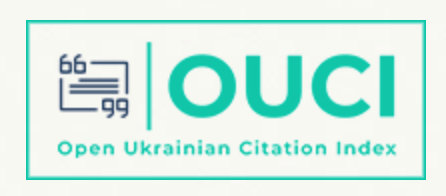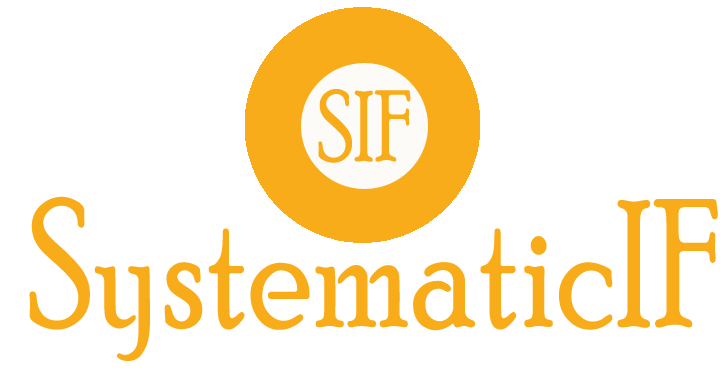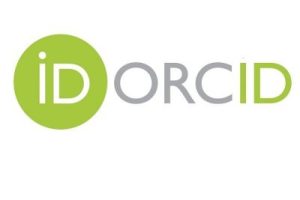Personal Predictors of Future Teachers’ Tolerance of Uncertainty
Abstract
The purpose of the research is to analyze the predictorsthat forecast the emergence of tolerance of uncertaintyas future teachers’ integral personal trait. Methods: MultipleStimulus Types Ambiguity Tolerance-1 (MSTAT-1)McLain (adapted by E. Osin), which diagnoses toleranceof uncertainty; linear multiple regression to determinethe effect of various predictors on the dependent variable.The total research sample consisted of 72 futureteachers of the “Primary Education” specialty. The sampleis homogeneous, formed randomly. Results. Therole of various predictors in the formation of futureteachers’ tolerance of uncertainty is shown. Semi-partialcorrelation (correlation of components) as an elementof multiple regression analysis proved that “attitude touncertain situations” (r = .532, p≤.01; R2 = .283 (28.0%of the explained variance)) and “preference for uncertainty”r = -.447; p≤.01; R2 = .199 (20.0%)) are dominant in explaining the variability of the dependent variable“tolerance of uncertainty”. Predictors of “attitude to novelty”(r = .376; p≤.01; R2 = .141 (14.0%)) and “attitudeto complex tasks” (r = .340; p≤.01; R2 = .115 (12.0%))although they have a statistically significant correlation,the strength of its connection and the percentageof explained dispersion are smaller than in thosedescribed above. Discussion and conclusions. Toleranceis an integral characteristic of a person, whichinvolves acceptance of the individuality of another personand one’s own personality. An average with a tendencyto low level of manifestation of tolerance of uncertaintywas diagnosed in higher education graduates inthe pedagogical field. This is the result of lack of futureteachers’ experience of interaction with uncertaintyand overcoming difficulties caused by it. The resultsof the multiple regression analysis proved that such predictorsas “attitude to uncertain situations” and “preferencefor uncertainty” had the greatest influence onthe expression of tolerance of uncertainty.
Downloads
References
Arquero, J. L., Fernández-Polvillo, C., Hassall, T., & Joyce, J. (2017). Relationships between communication apprehension, ambiguity tolerance and learning styles in accounting students. Revista de Contabilidad, 20(1), 13–24. https://doi.org/10.1016/j.rcsar.2015.10.002
Arquero, J. L., & Tejero, C. (2009). Ambiguity tolerance levels in Spanish accounting students: a comparative study. Revista de Contabilidad, 12(1), 95–115. https://doi.org/10.1016/s1138-4891(09)70003-2
Bavolar, J., Kacmar, P., Hricova, M., Schrötter, J., Kovacova-Holevova, B., Köverova, M., & Raczova, B. (2023). Intolerance of uncertainty and reactions to the COVID-19 pandemic. The Journal of General Psychology, 150(2), 143–170. https://doi.org/10.1080/00221309.2021.1922346
Beck, E. & Daniels, J. (2023). Intolerance of uncertainty, fear of contamination and perceived social support as predictors of psychological distress in NHS healthcare workers during the COVID-19 pandemic. Psychology, Health & Medicine, 28(2), 447–459. https://doi.org/10.1080/13548506.2022.2092762
Bochner, S. (1965). Defining intolerance of ambiguity. The Psychological Record, 15, 393–400. https://doi.org/10.1007/BF03393605
Budner, S. (1962). Intolerance of ambiguity as a personality variable. Journal of Personality, 30, 29–50. https://doi.org/10.1111/j.1467-6494.1962.tb02303.x
Chirumbolo, A., Areni, A., & Sensales, G. (2004). Need for cognitive closure and politics: Voting, political attitudes and attributional style. International Journal of Psychology, 39(4), 245–253. https://doi.org/10.1080/00207590444000005
Ellsberg, D. (1961). Risk ambiguity and the savage axioms. The Quarterly Journal of Economics, 75(4). 643–669. https://doi.org/10.2307/1884324
Frenkel-Brunswik, E. (1949). Intolerance of ambiguity as an emotional and perceptual personality variable. Journal of Personality, 18, 108–143. https://doi.org/10.1111/j.1467-6494.1949.tb01236.x
Geller, G., Faden, R. R., & Levine, D. M. (1990). Tolerance for ambiguity among medical students: Implications for their selection, training and practice. Social Science & Medicine, 31(5), 619–624. https://doi.org/10.1016/0277-9536(90)90098-d
Halian, I. M. (2017). Psychology of value-semantic self-regulation of future teachers. (Doctor’s thesis). G. S. Kostiuk Institute of Psychology of the National Academy of Pedagogical Sciences of Ukraine, Kyiv. URL: http://psychology-naes-ua.institute/files/pdf/disertaciya_galyan_i_(ch_2)(1)_1498595130.pdf
Halian, I., Popovych, I., Hulias, I., Serbin, Iy., Vyshnevska, O., Kovalchuk, Z., & Pyslar, A. (2023a). Correlation between personality traits of young athletes and their level of self-efficacy. Journal of Physical Education and Sport, 23(5), 1119–1129. https://doi.org/10.7752/jpes.2023.05140
Halian, I., Popovych, I., Vovk, V., Kariyev, A., Poleshchuk, L., & Halian, O. (2023b). Correlation of the coach’s qualities and junior athletes’ self-efficacy. Journal of Physical Education and Sport, 23(7), 1621–1630.https://doi.org/10.7752/jpes.2023.07199
Han, P. K. J., Schupack, D., Daggett, S., Holt, C. T., & Strout, T. D. (2015). Temporal changes in tolerance of uncertainty among medical students: insights from an exploratory study. Medical Education Online, 20(1). https://doi.org/10.3402/meo.v20.28285
Hromova, H. M. (2020). Intolerance of uncertainty in seriously injured veterans: a comparative analysis. Insight: the psychological dimensions of society, 4, 29–41. https://doi.org/10.32999/2663-970X/2020-4-2
Iannello, P., Mottini, A., Tirelli, S., Riva, S., & Antonietti, A. (2017). Ambiguity and uncertainty tolerance, need for cognition, and their association with stress. A study among Italian practicing physicians, Medical Education Online, 22(1), 1–10. https://doi.org/10.1080/10872981.2016.1270009
Işik, M. T., Can Özdemır R., Karadeniz E., & Erden Ertürk S. (2022). Levels of uncertainty, fear and satisfaction with health professionals: experiences of parents whose children are hospitalized for COVID-19. Psychology, Health & Medicine, 27(9), 2057–2065. https://doi.org/10.1080/13548506.2021.2014912
Jach, H. K., & Smillie, L. D. (2019). To fear or fly to the unknown: Tolerance for ambiguity and Big Five personality traits. Journal of Research in Personality, 79, 67–78. https://doi.org/10.1016/j.jrp.2019.02.003
Jooste, J., Wolfson, S., & Kruger, A. (2022). Irrational Performance Beliefs and Mental Well-Being Upon Returning to Sport During the COVID-19 Pandemic: A Test of Mediation by Intolerance of Uncertainty. Research Quarterly for Exercise and Sport. https://doi.org/10.1080/02701367.2022.2056117
Kartal, N., Arıkan, G., Seyhan, F., &Aydan, S. (2023). Mediator roles of resilience and intolerance of uncertainty in the effect of healthcare professionals’ coronavirus stigma on stress, International Journal of Healthcare Management, 16(1), 120–127. https://doi.org/10.1080/20479700.2022.2079588
Malouf, P., Quinlan, E., & Mohi, S. (2023). Predicting burnout in Australian mental health professionals: uncertainty tolerance, impostorism and psychological inflexibility. Clinical Psychologist, 27(2), 186–195. https://doi.org/10.1080/13284207.2022.2163159
McLain, D. L. (1993). The MSTAT-I: A new measure of an individual’s tolerance for ambiguity. Educational and Psychological Measurement, 53(1), 183–189. https://doi.org/10.1177/0013164493053001020
Norton, R. W. (1975). Measure of ambiguity tolerance. Journal of Personality Assessment, 39(6), 607–619. https://doi.org/10.1207/s15327752jpa3906_11
Osin, E. N. (2010). Factor structure of the D. McLain version of the general tolerance to uncertainty scale. Psychological diagnostics, 2, 65–86. URL: https://www.academia.edu/3145455
Paralkar, U., & Knutson, D. (2021). Coping with academic stress: Ambiguity and uncertainty tolerance in college students, Journal of American College Health. https://doi.org/10.1080/07448481.2021.1965148
Quinlan, E., & Deane, F. P. (2021). A longitudinal study of trainee psychologists’ tolerance of uncertainty, state anxiety and confidence in case formulation. Australian Psychologist, 56(6), 499–510. https://doi.org/10.1080/00050067.2021.1965855
Quinlan, E., Deane, F. P., Schilder, S., & Read, E. (2022). Confidence in case formulation and pluralism as predictors of psychologists’ tolerance of uncertainty. Counselling Psychology Quarterly, 35(4), 943–958. https://doi.org/10.1080/09515070.2021.1997918
Quinlan, E., Schilder, S., & Deane, F. P. (2021). This wasn’t in the manual”: a qualitative exploration of tolerance of uncertainty in the practicing psychology context. Australian Psychologist, 56(2), 154–167. https://doi.org/10.1080/00050067.2 020.1829451
Salamanca-Balen, N., Qiu, M., & Merluzzi, T. V. (2021). COVID-19 pandemic stress, tolerance of uncertainty and well-being for persons with and without cancer. Psychology & Health. https://doi.org/10.1080/08870446.2021.2020273
Stoycheva, K. (2008). The new and the best: Ambiguity tolerance and creativity motivation. A cross cultural content analysis. International Journal of Psychology, 43(3/4), 6. URL: https://eprints.nbu.bg/id/eprint/1631/1/ICP2008_IS%20008_Stoycheva.pdf
Stoycheva, K. (2010). Tolerance for ambiguity, creativity, and personality. Bulgarian Journal of Psychology (SEERCP 2009 Conference Papers, Part Two), 1–4, 178–188. URL: https://eprints.nbu.bg/id/eprint/1705/1/SEERCP2009_Katya%20Stoycheva.pdf
Trudel, P., & Cormier S. (2023). Intolerance of uncertainty, pain catastrophizing, and symptoms of depression: a comparison between adults with and without chronic pain. Psychology. Health & Medicine. https://doi.org/10.1080/13548506.2023.2240073
Weissenstein, A., Ligges, S., Brouwer, B., Marschall, B., & Friederichs, H. (2014). Measuring the ambiguity tolerance of medical students: a cross-sectional study from the first to sixth academic. Bio-MedCentral Family Practice, 15(6). https://doi.org/10.1186/1471-2296-15-6
Wu, X., Gu, X., & Zhang, H. (2016). The facilitative effects of ambiguous figures on creative solution. The Journal of Creative Behavior, 53(1), 44–51. https://doi.org/10.1002/jocb.161
Zerach, G., & Levi‐Belz, Y. (2019). Intolerance of uncertainty moderates the association between potentially morally injurious events and suicide ideation and behavior among combat veterans. Journal of Traumatic Stress, 32(3), 424–436. https://doi.org/10.1002/jts.22366
Authors who publish with scientific journal agree to the following terms:
• All scientific papers may be freely copied and distributed on any medium and in any format, provided that the references to the initial data of the scientific work are indicated.
• Authors retain copyright and grant the journal right of first publication with the work simultaneously licensed Creative Commons Attribution License .
• Authors are able to enter into separate, additional contractual arrangements for the non- exclusive distribution of the journal’s published version of the work (institutional repository, your website, monograph), with an acknowledgement of its initial publication in this journal.





































